Glendale, California, Hgh State Clinic, Hgh Injections, Hrt Doctors
Glendale, California Blood Testing Facilities
 Represents a LabCorp blood testing facility
Represents a LabCorp blood testing facility Represents a Quest Diagnostics blood testing facility
Represents a Quest Diagnostics blood testing facility

Nearby Labcorp Blood Testing facilities:
- Labcorp Center Distance: 1 m, 1510 S Central Ave. Ste 520, Glendale, Los Angeles County, CA, 91204
- Labcorp Center Distance: 4 m, 1809 Verdugo Blvd 290, Glendale, Los Angeles County, CA, 91208
- Labcorp Center Distance: 5 m, 50 Alessandro Pl. Suite A10, Pasadena, Los Angeles County, CA, 91105
- Labcorp Center Distance: 6 m, 960 E Green St Suite 290, Pasadena, Los Angeles County, CA, 91106
- Labcorp Center Distance: 7 m, 1400 S Grand Ave Ste 612, Los Angeles, Los Angeles County, CA, 90015
- Labcorp Center Distance: 8 m, 330 W. Las Tunas Dr. Ste 2, San Gabriel, Los Angeles County, CA, 91776
- Labcorp Center Distance: 9 m, 8920 Wilshire Blvd. Suite 516, Beverly Hills, Los Angeles County, CA, 90211
- Labcorp Center Distance: 10 m, 465 N Roxbury Dr Ste 715, Beverly Hills, Los Angeles County, CA, 90210
- Labcorp Center Distance: 11 m, 3831 Hughes Ave. Ste 607, Culver City, Los Angeles County, CA, 90232
- Labcorp Center Distance: 12 m, 15211 Vanowen St Ste 319, Van Nuys, Los Angeles County, CA, 91405
- Labcorp Center Distance: 14 m, 3680 Imperial Hwy Suite 320, Lynwood, Los Angeles County, CA, 90262
- Labcorp Center Distance: 15 m, 8540 S Sepulveda Blvd Ste 107, Westchester, Los Angeles County, CA, 90045
- Labcorp Center Distance: 16 m, 18399 Ventura Blvd. Suite 17, Tarzana, Los Angeles County, CA, 91356
- Labcorp Center Distance: 17 m, 18350 Roscoe Blvd. Suite 208, Northridge, Los Angeles County, CA, 91324
- Labcorp Center Distance: 18 m, 1135 S. Sunset Ave. Ste 403, West Covina, Los Angeles County, CA, 91790
- Labcorp Center Distance: 20 m, 3504 South Street, Lakewood, Los Angeles County, CA, 90712
- Labcorp Center Distance: 21 m, 4201 Torrance Blvd Ste 240, Torrance, Los Angeles County, CA, 90503
- Labcorp Center Distance: 22 m, 7301 Medical Center Dr Ste 304, West Hills, Los Angeles County, CA, 91307
- Labcorp Center Distance: 23 m, 3500 Lomita Blvd. Suite 102, Torrance, Los Angeles County, CA, 90505
- Labcorp Center Distance: 24 m, 1950 Sunnycrest Dr. Suite 1800, Fullerton, Orange County, CA, 92835
- Labcorp Center Distance: 25 m, 10861 Cherry St. Suite 200, Los Alamitos, Orange County, CA, 90720
- Labcorp Center Distance: 26 m, 7872 Walker St. Suite 109, La Palma, Orange County, CA, 92801
- Labcorp Center Distance: 27 m, 1661 Golden Rain Rd, Seal Beach, Orange County, CA, 90740
- Labcorp Center Distance: 28 m, 1190 Pacific Coast Hwy Ste C, Seal Beach, Orange County, CA, 90740
- Labcorp Center Distance: 29 m, 1201 N. Rose Dr. Suite 202, Placentia, Orange County, CA, 92870
- Labcorp Center Distance: 31 m, 2655 First St. Suite 340, Simi Valley, Ventura County, CA, 93065
- Labcorp Center Distance: 32 m, 12555 Central Ave. Ste Af, Chino, San Bernardino County, CA, 91710
- Labcorp Center Distance: 33 m, 705 W La Veta Ave Ste 102, Orange, Orange County, CA, 92868
- Labcorp Center Distance: 34 m, 18821 Delaware St. Ste 102, Huntington Beach, Orange County, CA, 92648
- Labcorp Center Distance: 35 m, 425 Haaland Dr. Ste 106, Thousand Oaks, Ventura County, CA, 91361
- Labcorp Center Distance: 36 m, 865 Patriot Drive Suite 101, Moorpark, Ventura County, CA, 93021
- Labcorp Center Distance: 37 m, 43839 15Th St West, Lancaster, Los Angeles County, CA, 93534
- Labcorp Center Distance: 38 m, 558 N. Ventu Park Rd. Suite C, Newbury Park, Ventura County, CA, 91320
- Labcorp Center Distance: 39 m, 1501 Superior Ave. Ste 209, Newport Beach, Orange County, CA, 92663
- Labcorp Center Distance: 41 m, 4870 Barranca Pkwy. Ste 290, Irvine, Orange County, CA, 92604
- Labcorp Center Distance: 42 m, 400 Newport Center Dr Ste 202, Newport Beach, Orange County, CA, 92660
- Labcorp Center Distance: 43 m, 3936 Phelan Rd. Suite F4, Phelan, San Bernardino County, CA, 92371
- Labcorp Center Distance: 44 m, 800 Magnolia Ave Ste 108, Corona, Riverside County, CA, 92879
- Labcorp Center Distance: 47 m, 23961 Calle De La Magdalena St, Laguna Hills, Orange County, CA, 92653
- Labcorp Center Distance: 48 m, 3975 Jackson St. Ste 104, Riverside, Riverside County, CA, 92503
- Labcorp Center Distance: 50 m, 6927 Brockton Ave Ste 1B, Riverside, Riverside County, CA, 92506
- Labcorp Center Distance: 51 m, 26691 Plaza Drive Suite 180, Mission Viejo, Orange County, CA, 92691
- Labcorp Center Distance: 52 m, 26800 Crown Valley Pkwy Ste360, Mission Viejo, Orange County, CA, 92691
- Labcorp Center Distance: 53 m, 300 South A St 103, Oxnard, Ventura County, CA, 93030
- Labcorp Center Distance: 55 m, 399 E. Highland Ave. Ste 510, San Bernardino, San Bernardino County, CA, 92404
- Labcorp Center Distance: 58 m, 2955 Loma Vista Rd, Ventura, Ventura County, CA, 93003
- Labcorp Center Distance: 59 m, 12332 Hesperia Rd Suite B, Victorville, San Bernardino County, CA, 92395
- Labcorp Center Distance: 60 m, 255 Terracina Blvd Ste 106, Redlands, San Bernardino County, CA, 92373
- Labcorp Center Distance: 61 m, 19341 Bear Valley Rd Ste 102, Apple Valley, San Bernardino County, CA, 92308
- Labcorp Center Distance: 62 m, 16008 Kamana Dr. Suite 201, Apple Valley, San Bernardino County, CA, 92307
- Labcorp Center Distance: 63 m, 31571 Canyon Estates Dr Ste101, Lake Elsinore, Riverside County, CA, 92532
Nearby Quest Blood Testing facilities:
- Quest Center Distance: 0 m, 801 S Chevy Chase Dr, Glendale, Los Angeles County, CA, 91205-4437
- Quest Center Distance: 6 m, 960 E. Green St., Pasadena, Los Angeles County, CA, 91106-2405
- Quest Center Distance: 8 m, 416 W Lastunas Dr, San Gabriel, Los Angeles County, CA, 91776-1236
- Quest Center Distance: 9 m, 8501 Wilshire Blvd, Beverly Hills, Los Angeles County, CA, 90211-3117
- Quest Center Distance: 17 m, 18250 Roscoe Blvd, Northridge, Los Angeles County, CA, 91325-4265
- Quest Center Distance: 19 m, 15141 Whittier Blvd, Whittier, Los Angeles County, CA, 90603-2158
- Quest Center Distance: 21 m, 520 N Prospect Ave, Redondo Beach, Los Angeles County, CA, 90277-3043
- Quest Center Distance: 23 m, 23441 Madison St, Torrance, Los Angeles County, CA, 90505-4735
- Quest Center Distance: 28 m, 1294 W 6Th St, San Pedro, Los Angeles County, CA, 90731-2998
- Quest Center Distance: 30 m, 2876 Sycamore Dr, Simi Valley, Ventura County, CA, 93065-1550
- Quest Center Distance: 31 m, 4028 Grand Ave, Chino, San Bernardino County, CA, 91710-5486
- Quest Center Distance: 32 m, 1220 La Venta Dr., Westlake Village, Ventura County, CA, 91361-3749
- Quest Center Distance: 33 m, 1310 W Stewart Dr, Orange, Orange County, CA, 92868-3838
- Quest Center Distance: 34 m, 18800 Main St, Huntington Beach, Orange County, CA, 92648-1718
- Quest Center Distance: 35 m, 1399 E Foothill Blvd, Upland, San Bernardino County, CA, 91786-4060
- Quest Center Distance: 41 m, 4950 Barranca Pkwy, Irvine, Orange County, CA, 92604-8648
- Quest Center Distance: 43 m, 2250 S. Main St, Corona, Riverside County, CA, 92882-2534
- Quest Center Distance: 46 m, 500 Paseo Camarillo, Camarillo, Ventura County, CA, 93010-5900
- Quest Center Distance: 47 m, 23521 Paseo De Valencia, Laguna Hills, Orange County, CA, 92653-3673
- Quest Center Distance: 48 m, 9041 Magnolia Ave, Riverside, Riverside County, CA, 92503-3956
- Quest Center Distance: 50 m, 4646 Brockton Ave, Riverside, Riverside County, CA, 92506-0103
- Quest Center Distance: 55 m, 2150 N Waterman Ave, San Bernardino, San Bernardino County, CA, 92404-4811
- Quest Center Distance: 57 m, 6485 Day St, Riverside, Riverside County, CA, 92507-0926
- Quest Center Distance: 59 m, 12370 Hesperia Rd, Victorville, San Bernardino County, CA, 92395-4787
- Quest Center Distance: 63 m, 32251 Mission Trl, Lake Elsinore, Riverside County, CA, 92530-4536
- Quest Center Distance: 69 m, 807D Tucker Rd, Tehachapi, Kern County, CA, 93561-2510
- Quest Center Distance: 75 m, 27699 Jefferson Ave, Temecula, Riverside County, CA, 92590-2696
- Quest Center Distance: 85 m, 3601 Vista Way, Oceanside, San Diego County, CA, 92056-4559
- Quest Center Distance: 86 m, 309 E Mountain View St, Barstow, San Bernardino County, CA, 92311-2814
- Quest Center Distance: 88 m, 3905 State St, Santa Barbara, Santa Barbara County, CA, 93105-5101
- Quest Center Distance: 93 m, 477 N El Camino Real, Encinitas, San Diego County, CA, 92024-1353
- Quest Center Distance: 99 m, 555 E Tachevah Dr, Palm Springs, Riverside County, CA, 92262-5750
Glendale California Hormone Replacement Therapy Services
Did you know that healthy Hormone Levels are one of the most important factors which encourage a long and healthy life? Hormone Balance is critical to maintaining a healthy mind and body, and the Conscious Evolution Institute is a board-certified and fully-licensed medical clinic which specializes in medical treatments and therapies designed to facilitate Hormone Homeostasis, helping you take the steps necessary to promote a healthier and more satisfactory life.
Starting HRT Is Easy!
Simply by contacting us by filling out the form on this page or giving us a call at the number that you see at the top of the page, you can take the first step in achieving Hormone Restoration and improving your overall health. We specialize in Testosterone Replacement and Human Growth Hormone Restoration Therapy, because HGH and Testosterone are two of the most important hormones when it comes to health and wellness, and these are also two of the hormones that are most likely to drop to low and unhealthy levels as you grow older.
Hormone Imbalance Becomes More Common with Age
Testosterone and HGH Production remain strong and steady from puberty, all the way through to the age of about thirty, when the production of these Hormones fall into a slow and insidious state of decline. Some people never reach a state at which their hormone levels become problematic, but HGH Deficiency and Testosterone Deficiency are major issues for millions of men across the United States, and HGH Deficiency affects women just like it does men.
An Experienced Glendale HRT Provider that You Can Trust
If you are looking for a Testosterone Clinic or an HGH Clinic that you can trust, the Conscious Evolution Institute has years of experience in dealing with both of these conditions and can help you overcome the burden of Low-T and Hypopituitarism.
We are a well-connected HRT Medical clinic, and we can direct you to an affiliate medical provider local in your area to perform the blood test and routine physical needed to establish your health and your current hormone state. Your blood test will undergo comprehensive diagnostic screening which will help us determine what form of treatment can best improve your health and your life.
Glendale Hormone Therapy to Your Door
If you qualify for Hormone Treatments, we can deliver quality HRT products directly to your home or office, including Sermorelin Acetate and/or Growth Hormone Injections for HGH Deficiency, and Testosterone Creams, Low-T Patches, or Testosterone Injections for Hypogonadism. We also offer weight loss treatments designed to help you lose as much as thirty pounds per month, such as HCG Weight Loss Injections.
Call Us for More HRT Information!
If you've been considering Hormone Replacement Therapy, but don't know where to start, our knowledgeable staff can fill you in on all of the details regarding the HRT Solutions that we provide, and can help you decide whether HRT Treatment is right for you. We are qualified and certified to treat patients thirty years of age and older in the United States. Don't Let Low-T, HGH Deficiency, or Obesity prevent you from living the life that you deserve. Contact us today!
Glendale California Information
Glendale, California is one of the largest suburbs of the city of Los Angeles, with more than 200,000 citizens. It is located immediately to the west of Los Angeles, proper, inland from the Pacific Ocean. Nearby communites of Glendale include Pasadena and Burbank, and the Angeles National Forest is situated immediately on the western outskirts of the city. The city is also known as the Jewel City. Neighborhoods in Glendale include Glenoaks Canyon, Emerald Isle, Crescenta Highlands, Chevy Chase, and Brockmont. The city is considered one of the most livable cities in America.
Glendale is located at the confluence of the San Gabriel and San Fernando Valleys, which is the prime reason why the city is afforded such beautiful and amazing views, and why the area is such a fitting location for a beautiful and vibrant community. The city of Glendale first established its name and status as a township in 1884, and 22 years later, the township formally became a city.
Glendale Greenspace
Because of its proximity to the national forest, one of the prime attractions in Glendale is the Deukmejian Wilderness Park, which is a beautiful wilderness reserve that is contained within the northernmost border of the city. Other greenspace in Glendale includes the Verdugo Mountains Open Space Preserve, Forest Lawn Memorial Park, and Cunningham Canyon.
Glendale California Economy
By far, the most well-known company that comes out of Glendale California is Dreamworks, a film and animation company which largely owes its popularity and persistence to Steven Spielberg. Dreamworks is notable for animated films such as Shrek, Madagascar, and How to Train Your Dragon. There are a number of other national and international companies which have their American headquarters in Glendale, such as International House of Pancakes and Nestlé. Other major employers in the city include Glenair Incorporated, Glendale Memorial Medical Center, and Glendale Adventist Medical Center.
Famous Celebrities from Glendale
Glendale, being so close to Los Angeles, has had a huge number of important and renowned citizens that spent time in the city, among which are musicians Woody Guthrie and Rick Springfield, actors Shia Lebouf, Don Knotts, and Paul Walker, and actress Eva Mendes.
Things to Do in Glendale
There are a few established theters in the city of Glendale California, including the Glendale Centre Theater, A Noise Within, and the Alex Theater. For people that are interested in art and knowledge, the Brand Library and Art Center is an excellent destination.
There are a number of historic homes and estates in Glendale, California which are worth checking out, including the oldest standing structure in the city, Verdugo Adobe, and El Miradero, a huge palacial estate located near the heart of the city.
For those interested in good places to shop in Glendale, three of the prime locations are the Montrose Shopping Park, the Glendale Fashion Center, and the Glendale Galleria.
All About Glendale, California Geographic Area
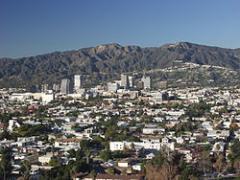
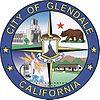
Glendale ( /ËnÉ¡lÉondeɪl/) is a city in Los Angeles County, California, United States. As of the 2010 Census, the city population is 191,719, making it the third largest city in Los Angeles County and the 22nd largest city in the state of California.
/ËnÉ¡lÉondeɪl/) is a city in Los Angeles County, California, United States. As of the 2010 Census, the city population is 191,719, making it the third largest city in Los Angeles County and the 22nd largest city in the state of California.
Glendale lies at the eastern end of the San Fernando Valley, bisected by the Verdugo Mountains, and is a suburb in the Greater Los Angeles Area. The city is bordered to the northwest by the Sun Valley and Tujunga neighborhoods of Los Angeles; to the northeast by La CaR±ada Flintridge and the unincorporated area of La Crescenta; to the west by Burbank and Griffith Park; to the east by Eagle Rock and Pasadena; to the south by the Atwater Village neighborhood of Los Angeles; and to the southeast by Glassell Park neighborhood of Los Angeles. The Golden State, Ventura, Glendale, and Foothill freeways run through the city.
Glendale's Forest Lawn Memorial Park Cemetery contains the remains of many noted celebrities and local residents. Glendale is also home to one of the largest communities of Armenians in the United States, with one in four people in Glendale being Armenian.

The area was long inhabited by the Tongva people (or "People of the Earth"), who were later renamed the GabrieleR±os by the Spanish missionaries, after the nearby Mission San Gabriel ArcR¡ngel.
In 1798, Jose MarRa Verdugo, a corporal in the Spanish army from Baja California, received the Rancho San Rafael from Governor Diego de Borica, formalizing his possession and use of land on which he had been grazing livestock and farming since 1784. Rancho San Rafael was a Spanish concession, of which 25 were made in California. Unlike the later Mexican land grants, the concessions were similar to grazing permits, with the title remaining with the Spanish crown.
In 1860, his grandson Teodoro Verdugo built the Verdugo Adobe, which is the oldest building in Glendale. The property is the location of the Oak of Peace where early Californio leaders including Pio Pico met in 1847 and decided to surrender to Lieutenant Colonel John C. Fremont.
Verdugo's descendants sold the ranch in various parcels, some of which are included in present-day Atwater Village, Eagle Rock, and Highland Park neighborhoods of Los Angeles.
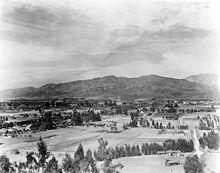
In 1884, residents gathered to form a town and chose the name "Glendale". Residents to the southwest formed "Tropico" in 1887. The Pacific Electric Railway brought streetcar service in 1904.
Glendale incorporated in 1906, and annexed Tropico 12 years later. An important civic booster of the era was Leslie Coombs Brand (1859 ae1925), who built an estate in 1904 called El Miradero featuring an eye-catching mansion whose architecture combined characteristics of Spanish, Moorish, and Indian styles, copied from the East Indian Pavilion at the 1893 World's Columbian Exposition (World's Fair) held in Chicago, which he visited. Brand loved to fly, and built a private airstrip in 1919 and hosted "fly-in" parties, providing a direct link to the soon-to-be-built nearby Grand Central Airport. The grounds of El Miradero are now city-owned Brand Park and the mansion is the Brand Library, according to the terms of his will. Brand partnered with Henry E. Huntington to bring the Pacific Electric Railway, or the "Red Cars," to the area. Today, he is memorialized by one of the city's main thoroughfares, Brand Boulevard.
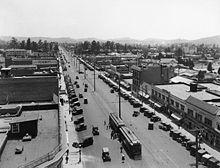
The city's population rose from 13,756 in 1920 to 62,736 in 1930. The Forest Lawn Memorial Park opened in 1917. Pioneering endocrinologist and entrepreneur Henry R. Harrower opened his clinic in Glendale in 1920, which for many years was the largest business in the city. The American Green Cross, an early conservation and tree preservation society, was formed in 1926 (it disbanded three years later and the current organization of that name is unrelated). In 1964, Glendale was selected by George Lincoln Rockwell to be the West Coast headquarters of the American Nazi Party. Its offices, on Colorado Street in the downtown section of the city, remained open until the early 1980s.
In 1977 and 1978 ten murdered women were found in and around Glendale in what became known as the case of the Hillside Strangler. The murders were the work of Kenneth Bianchi and Angelo Buono, the latter of whom resided at 703 East Colorado Street where most of the murders took place.
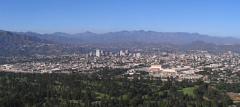
Glendale is located at the juncture of two large valleys, the San Fernando and the San Gabriel. According to the United States Census Bureau, the city has a total area of 79.212 km2 (30.6 sq mi). 30.5 square miles (79 km2) of it is land and 0.13 square miles (0.34 km2) of it (0.43%) is water. It is bordered to the north by the foothill communities of La Canada Flintridge, La Crescenta, and Tujunga; to the south by the Atwater Village community incorporated by the city of Los Angeles; to the east by Pasadena and Eagle Rock (also incorporated within Los Angeles); and to the west by the city of Burbank.
Several known earthquake faults criss-cross the Glendale area and adjacent mountains, like they do in most of southern California. Among the more recognized faults by seismologists are the Sierra Madre and Hollywood faults, which are situated in the city's northern and southwestern portions, respectively. Additionally, the Verdugo and Raymond faults intersect through the city's central and southeastern areas. The San Gabriel fault, meanwhile, is located northeast of the city. Roughly 75 miles (121 km) northeast of Glendale, there's a major part of the San Andreas Fault known as the "Big Bend," where quake-recurrence tracking shows major activity roughly every 140 ae160 years. The closest portion of the San Andreas is actually 29 miles (47 km) from Glendale. The last major quake along the southern San Andreas was recorded in 1857.
In the 1971 San Fernando earthquake, which took place along the western edge of the Sierra Madre fault, there were surface ruptures nearly 12 miles (19 km) long, including one portion a few miles northwest of Glendale. Most of the damage was in the northern San Fernando Valley, though 31 structures in Glendale suffered major damage and had to be demolished, plus multiple chimneys collapsed. The 1994 Northridge earthquake had an epicenter about 18 miles (29 km) from Glendale. The city suffered severe damage to a public parking structure and sections of the Glendale Galleria parking structures and exterior columns incurred damages.
Glendale has a Mediterranean climate (Koppen climate classification Csa). The highest recorded temperature in Glendale was 118 °F (48 °C) in September 2010. The lowest recorded temperature was 16 °F ( na9 °C) in December 1968. The warmest month is August and the coolest month is January. The rainfall is highest in February and lowest in July. The hills and mountains of northern Glendale very rarely see snow, owing to its colder temperatures during the winter, however it only occurs about every five to ten years. The last time it snowed was February 26, 2011. Snow accumulations around 3 inches were present. Sleet was present as well. Frost is common from late November to early March. Temperatures as low as 30 ° do occur during the winter, but only once or twice. Heavy rains and thunderstorms are also common during the winter time. The spring times bring pleasant weather, with very little rain. The summer months are usually unbearable, with highs from 85, up to over 115. Highs over 110 ° occur up to five or six times a year, and can sometimes bring monsoon thunderstorms with them. Humidity can be very low, but it can also be very high, causing very steamy, muggy, and uncomfortable conditions. These days cause heat indices over 120 °. Fall brings nice weather, but these months are very windy due to the Santa Ana Winds, blowing in once or twice a year from October to December. The Santa Ana's bring very gusty winds. These winds can reach up to 60 or 70 miles per hour, with gusts up to 100 in mountain passes and canyons. There are anywhere from one to seven or eight thunderstorms in Glendale per year. Very rarely are they severe, however when they are, they're accompanied by gusty winds and hail.
According to the City's 2011 Comprehensive Annual Financial Report, the top employers in the city are as follows (with number of employees given): Glendale Adventist Medical Center (2,234), City of Glendale (2,122), Glendale Unified School District (1,886), Glendale Memorial Medical Center (1,463), Glendale Community College (1,406), Nestle (1,269), Walt Disney Imagineering (1,025), Diagnostic Laboratories (931), Carney Educational Services (720) and Verdugo Hills Hospital (707). Other companies based in Glendale include DineEquity, Public Storage and PS Business Parks.
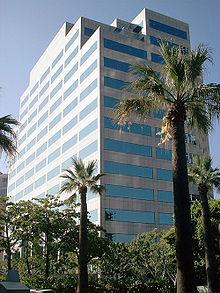
Grand Central Airport was a municipal airport developed from 1923 which became the largest employer in Glendale for many years, and contributed to the development of aviation in the United States in many important ways. The main terminal building still stands and includes both art deco and Spanish style architectural elements. The facility was the first official terminal for the Los Angeles area as well as the departure point for the first commercial west to east transcontinental flight flown by Charles Lindbergh. During World War II, the Grand Central Air Terminal building was camouflaged to protect it from enemy targeting. It was closed down in 1959, and made way for the Grand Central Business Park.
The Bob's Big Boy chain of hamburger restaurants started in Glendale on East Colorado in August 1936, and the Baskin-Robbins, "31 Flavors" chain of ice cream parlors started in Adams Square in 1945. The Glendale Public Library on Harvard Street houses its "Special Collections" department which contains original documents and records on much of the history of Glendale. It also contains one of the largest collections of books on cats in the world, over 20,000 volumes. It was donated to the library in the 1950s by the Jewel City Cat Fanciers Club, with the understanding that it would be made into a special collection and kept permanently for club members to use and enjoy.
The city saw significant development in the 1970s, with the completion of the Glendale Freeway (Highway 2) and the Ventura Freeway (Highway 134).
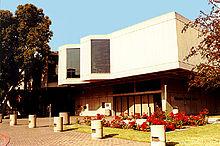
Redevelopment of Brand Boulevard, renovation of the 1925 Alex Theatre, and construction of the Glendale Galleria shopping mall which opened in 1976.
Several large companies have offices in Glendale. The U.S. headquarters of the Swiss foods multinational Nestle and International House of Pancakes are located in Glendale. The Los Angeles regional office of California's State Compensation Insurance Fund is in Glendale. Americas United Bank was formed here in 2006 and their headquarters are located in Glendale. Nero AG, the software company that makes Nero Burning ROM, also has its main North American subsidiary located in Glendale. Panda Security, a large antivirus software company, also has its principal U.S. office in Glendale. Neopets, Inc., a company that created the popular virtual pet website, Neopets, is located in the city (it was sold in 2005 to Viacom).
In 1994, Steven Spielberg, Jeffrey Katzenberg and David Geffen formed DreamWorks SKG, a diversified entertainment company. DreamWorks Animation remains located in the city's Grand Central Business Park on land formerly occupied by a helicopter landing base on the old air field. The Walt Disney Company also has a large campus located in the Grand Central Business Park that includes the headquarters for its Imagineering and Consumer Products divisions, The Muppets Studio, and also owns what's left of Grand Central Terminal. The Disney-owned KABC-TV is headquartered on the property which is located at the southwest end of the Imagineering campus.
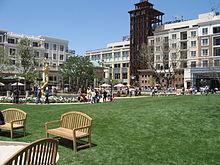
In 2005, construction began near the Galleria of developer Rick Caruso's "Americana at Brand", a 15.5-acre (63,000 m2) outdoor shopping and residential community. Caruso had previously designed and built The Grove at Farmers Market. The new Glendale development was opened to the public on May 2, 2008, and features 75 shops and restaurants, 238 apartments, 100 condominiums, and a Pacific Theatres 18-plex Cinema which seats 3000 people.
A 2011 study by an outside consulting organization hired by the city showed that people felt Glendale was boring. After seeing the results of the study, the Glendale City Council voted to appropriate $1 million to undertake an image campaign based on the tagline: auYour Life. Animated. au
Glendale has many options for shopping including Glendale Galleria, which is anchored by Nordstrom, Macy's, Target and J. C. Penney, and the Americana at Brand, which is an upscale outdoor mall (similar to The Grove at Farmers Market in L.A.) which includes stores such as H&M, Armani Exchange, True Religion, and Urban Outfitters. The Americana at Brand soon will be home to a Nordstrom that was previously was located inside the Glendale Galleria. Another shopping area is the Glendale Fashion Center, which is anchored by Ross, TJ Max, Nordstrom Rack, Staples, and Petco. Shopping can also be done at Montrose Shopping Park in North Glendale. The shopping park runs down Honolulu Avenue and is filled with many stores and restaurants.
The 2010 United States Census reported that Glendale had a population of 191,719. The population density was 6,268.6 people per square mile (2,420.3/km ²). The racial makeup of Glendale was 136,226 (71.1%) White, 2,573 (1.3%) African American, 531 (0.3%) Native American, 31,434 (16.4%) Asian (6.9% Filipino, 5.4% Korean, 1.3% Chinese, 0.9% Indian, 0.6% Japanese, 0.4% Vietnamese, 0.9% Other Asian), 122 (0.1%) Pacific Islander, 12,146 (6.3%) from other races, and 8,687 (4.5%) from two or more races. Hispanic or Latino of any race were 33,414 persons (17.4%). Non-Hispanic Whites were 61.5% of the population in 2010, down from 89.6% in 1970.
The Census reported that 190,290 people (99.3% of the population) lived in households, 223 (0.1%) lived in non-institutionalized group quarters, and 1,206 (0.6%) were institutionalized.
There were 72,269 households, out of which 21,792 (30.2%) had children under the age of 18 living in them, 37,486 (51.9%) were opposite-sex married couples living together, 8,908 (12.3%) had a female householder with no husband present, 3,693 (5.1%) had a male householder with no wife present. There were 2,359 (3.3%) unmarried opposite-sex partnerships, and 605 (0.8%) same-sex married couples or partnerships. 18,021 households (24.9%) were made up of individuals and 7,077 (9.8%) had someone living alone who was 65 years of age or older. The average household size was 2.63. There were 50,087 families (69.3% of all households); the average family size was 3.19.
The population was spread out with 35,732 people (18.6%) under the age of 18, 16,609 people (8.7%) aged 18 to 24, 54,518 people (28.4%) aged 25 to 44, 54,942 people (28.7%) aged 45 to 64, and 29,918 people (15.6%) who were 65 years of age or older. The median age was 41.0 years. For every 100 females there were 91.1 males. For every 100 females age 18 and over, there were 87.9 males.
There were 76,269 housing units at an average density of 2,493.8 per square mile (962.8/km ²), of which 27,535 (38.1%) were owner-occupied, and 44,734 (61.9%) were occupied by renters. The homeowner vacancy rate was 1.3%; the rental vacancy rate was 5.5%. 76,769 people (40.0% of the population) lived in owner-occupied housing units and 113,521 people (59.2%) lived in rental housing units.
As of the census of 2000, there were 194,973 people, 71,805 households, and 49,617 families residing in the city. The population density was 6,362.2 inhabitants per square mile (2,456.1/km ²). There were 73,713 housing units at an average density of 2,405.3 per square mile (928.6/km ²). The racial makeup of the city was 63.6% White, 1.6% Black or African American, 0.3% Native American, 16.1% Asian American, 0.1% Pacific Islander, 8.6% from other races, and 10.1% from two or more races. 19.7% of the population were Hispanic or Latino of any race.
There were 71,805 households out of which 32.9% had children under the age of 18 living with them, 52.3% were married couples living together, 11.8% had a female householder with no husband present, and 30.9% were non-families. 25.7% of all households were made up of individuals and 8.7% had someone living alone who was 65 years of age or older. The average household size was 2.68 and the average family size was 3.27.
In the city the population was spread out with 22.4% under the age of 18, 8.4% from 18 to 24, 32.2% from 25 to 44, 23.1% from 45 to 64, and 13.9% who were 65 years of age or older. The median age was 38 years. For every 100 females there were 91.3 males. For every 100 females age 18 and over, there were 88.0 males.
The median income for a household in the city was $41,805, and the median income for a family was $47,633. Males had a median income of $39,709 versus $33,815 for females. The per capita income for the city was $22,227. About 13.6% of families and 15.5% of the population were below the poverty line, including 20.7% of those under age 18 and 11.9% of those age 65 or over.
Armenian families have lived in the city since the 1920s, but the surge in immigration escalated in the 1970s. Armenian-Americans are well integrated into the city, with many businesses, several Armenian schools, and ethnic/cultural organizations serving this ethnic group. Glendale has the highest percentage of residents of Armenian descent, most of whom arrived in the city in the last two decades. The city of Glendale is home to one of the largest Armenian communities outside of Armenia.
According to the United States 2000 Census Glendale is home to 53,854 Armenian-Americans (making up 27.6% of the total population), increasing from 1990 when there were 31,402 Armenian-Americans in the city. As of 2009, one of the five members of Glendale's city council is of Armenian descent aeAra J. Najarian. Former Armenian-American mayors of Glendale include Larry Zarian, Bob Yousefian, Rafi Manoukian, and Ara Najarian.
Some outspoken members of the highly successful Armenian-American rock band, System Of A Down, were based in Glendale at the time of formation. These include singer Serj Tankian and bassist Shavo Odadjian.
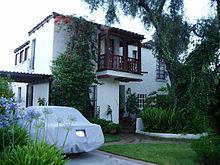
According to the city aos most recent Comprehensive Annual Financial Report, the city aos various funds had $575.6 million in Revenues, $542.8 million in expenditures, $2,089.7 million in total assets, $480.9 million in total liabilities, and $460.4 million in cash and investments.
The Los Angeles County Department of Health Services operates the Glendale Health Center in Glendale.
The city of Glendale, along with neighboring Burbank and Pasadena, falls under California's 29th district in the United States House of Representatives. Congressman Adam Schiff has represented the district since 2000, and his vocal stances on issues regarding U.S.-Armenia relations reflect the large Armenian presence in the district.
In the state legislature Glendale is located in the 21st Senate District, represented by Democrat Carol Liu, and in the 38th (4%) and 43rd (96%) Assembly Districts, represented by Republican Cameron Smyth and Democrat Mike Gatto respectively. Federally, Glendale is located in California's 29th congressional district, which has a Cook PVI of D +12 and is represented by Democrat Adam Schiff.
Glendale maintains its own police department. The police department operates out of its main station in Downtown Glendale, its Downtown substation in the Glendale Galleria and the Montrose substation in Verdugo City. The California Highway Patrol has its Southern Division Headquarters in Downtown Glendale. Glendale also maintains its own class one fire department. Ambulance service is provied by Glendale fire basic life support (BLS) ambulances.
The Glendale Unified School District operates the public schools in Glendale. The GUSD high schools include Glendale High School, Herbert Hoover High School, Clark Magnet High School, Crescenta Valley High School located in La Crescenta and Allan F. Daily High School. A number of private schools also operate in Glendale, including Chamlian Armenian School, Holy Family High School, Salem Lutheran School and Glendale Adventist Academy. Glendale is also home to Glendale College.
Glendale offers many transportation options. LADOT, Metro Local, Metro Rapid and Glendale Beeline all have buses that run in the city. Glendale Transportation Center (GTC) provides connections to Greyhound buses and three train lines. Glendale is also served by four freeways: the Glendale Freeway (State Route 2), the Ventura Freeway (State Route 134), the Foothill Freeway (Interstate 210) and the Golden State Freeway (Interstate 5). Major surface streets in the city include the following: Brand Boulevard, Broadway, Canada Boulevard, Central Avenue, Chevy Chase Drive, Colorado Boulevard, Foothill Boulevard, Glendale Avenue, Glenoaks Boulevard, Grandview Avenue, La Crescenta Avenue, Honolulu Avenue, Pennsylvania Avenue, Riverside Drive, Victory Boulevard, Pacific Avenue, Sonora Avenue, Western Avenue, San Fernando Road, Verdugo Road/Boulevard, Mountain Street, and Ocean View Boulevard.
A number of notable people are natives of or have lived in Glendale, including:
Currently, Glendale has the following sister cities.



Word Count: 4225






